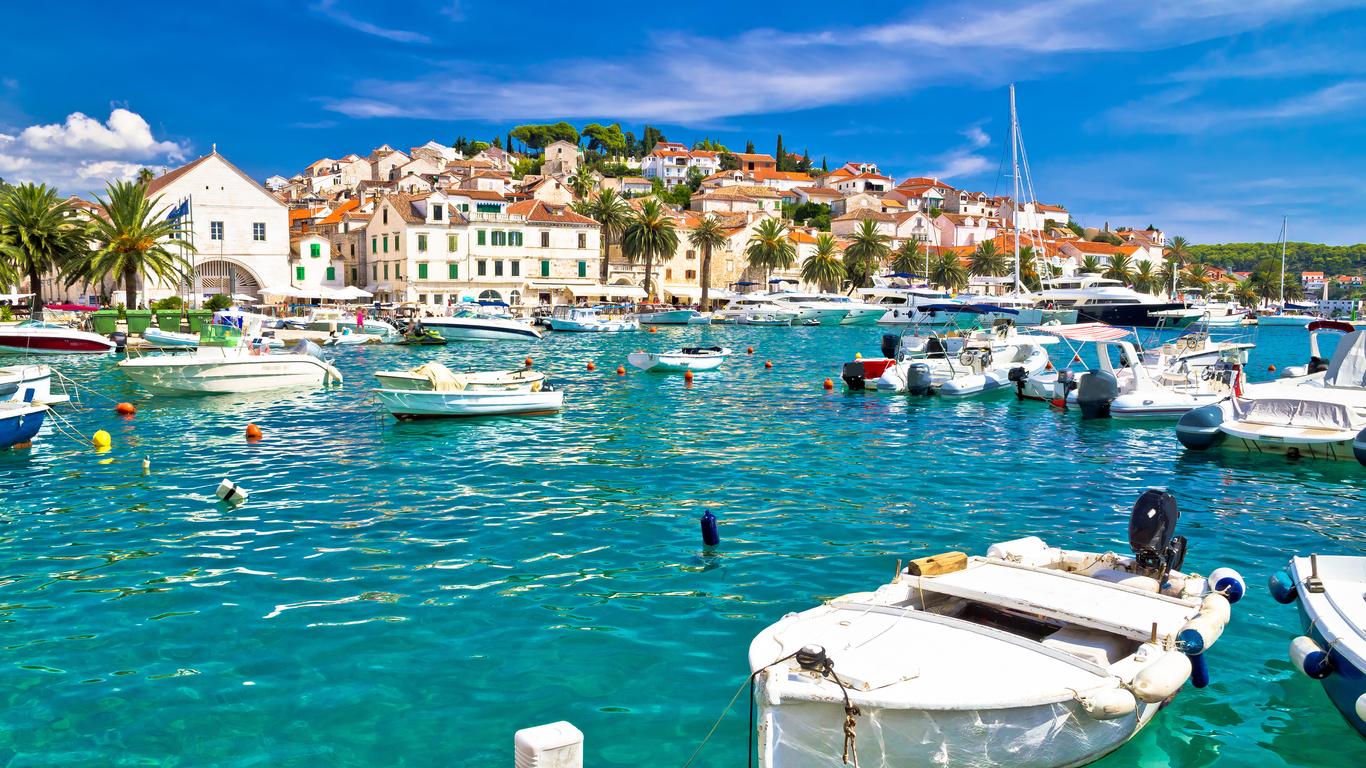Stretching along the Adriatic Sea from the island of Rab to the Bay of Kotor, Dalmatia is one of Croatia’s four historical regions. It’s home to centuries-old cities that include Split, Dalmatia and Zadar, as well as sun-drenched islands and a rugged hinterland renowned for its karst landscapes.
Things to do in Dalmatia
From its idyllic islands to ancient cities and breathtaking natural landscapes, Dalmatia is one of Croatia’s most popular destinations.
Explore Diocletian’s Palace. In the historic heart of Split is Diocletian’s Palace, an ancient palace built for the Roman emperor at the turn of the fourth century AD. Step through one of the four monumental gates and marvel at the Peristyle’s 3,500-year-old sphinx before soaking up the elevated views from the bell tower of St. Duje’s Cathedral.
Stroll along Dubrovnik’s stone walls. One of Dalmatia’s most-visited destinations is Dubrovnik - a UNESCO World Heritage-listed city ringed by immense stone walls dating back to the 16th century. A walk along these ramparts offers elevated views across the Old Town, which is home to the Renaissance-style Sponza Palace and the ornate St. Blaise Church.
Korčula. Nicknamed the “Emerald Isle”, Korčula is home to an atmospheric Old Town overlooking the Peljesac Channel. You can marvel at the Gothic-Renaissance architecture of St. Mark’s Cathedral and delve into the local history at the Korčula Town Museum. The island’s sun-drenched vineyards and spectacular coastline can be explored on leisurely cycling tours.
Krka National Park. Sprawling around the Krka River, this spectacular park near Šibenik is renowned for its majestic cascades and monastic ruins. Follow the nature trail that leads to Roški Slap and admire the traditional watermills of Skradinski Buk or visit the 15th-century Franciscan monastery on Visovac Island.
Getting around Dalmatia
Split, Zadar and Dubrovnik all have international airports offering flights to destinations across Europe while ferries connect from all three cities to Italy and Dalmatia’s offshore islands. Regular trains travel from Zagreb to towns and cities along the Dalmatian coastline while buses serve smaller villages.





